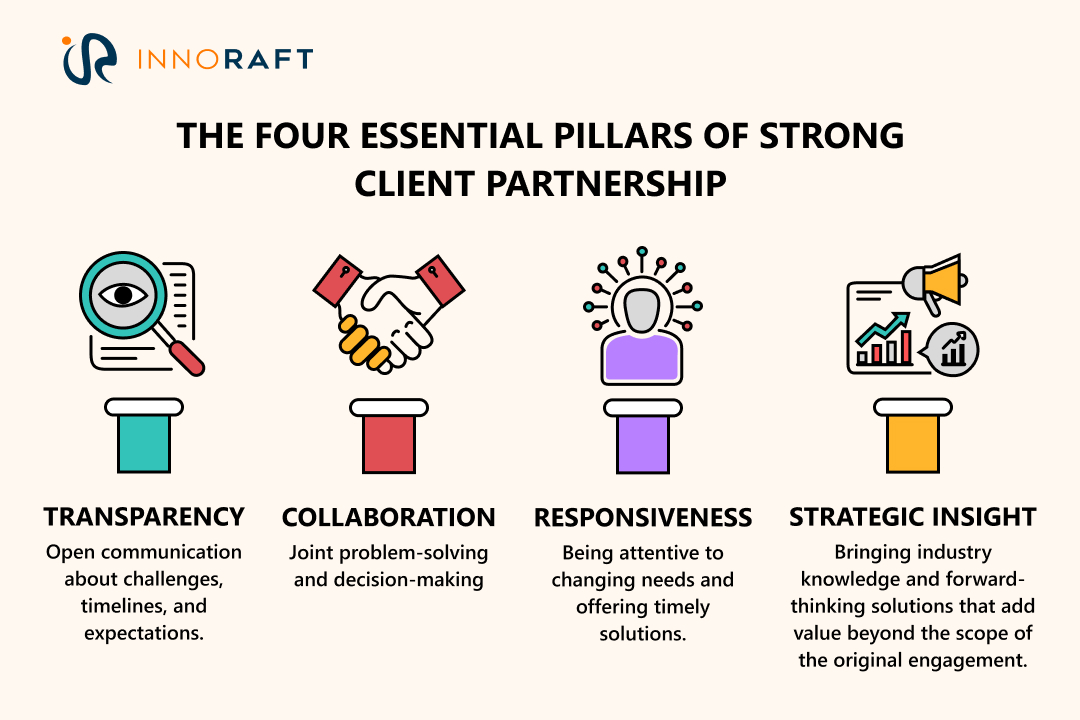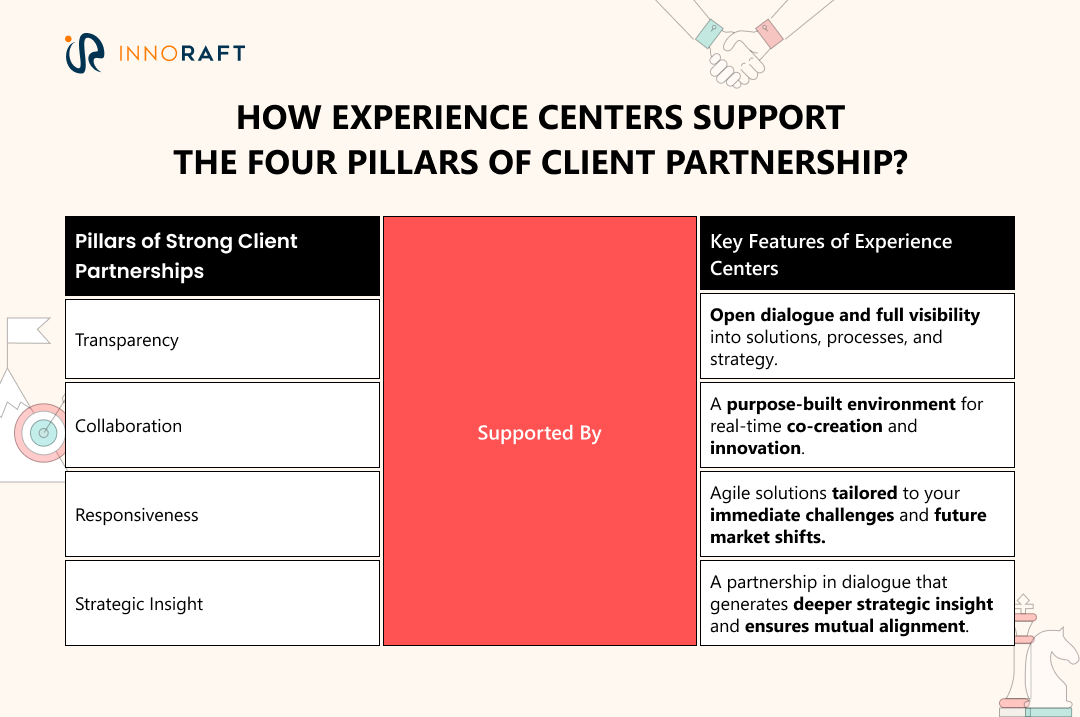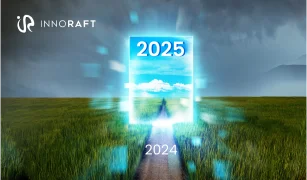Lasting, high-value relationships with clients in the era of evolving digital expectations are more valuable than ever. You might have a great product, a strong team, and a streamlined delivery model — but if you're not investing in deeper, more experiential engagement, you're likely leaving long-term value on the table. In brief, experience-driven client partnerships are becoming essential in this new era.
But what is client partnership? The definition of client partnership has evolved with the business landscape. The previous transactional relationship has evolved into strategic alliances built on mutual trust, shared objectives, and long-term value creation. The shift is so profound that it is now evident in the market itself. Studies predict that the global strategic alliance services market size will expand at a CAGR of 8.6% from 2025 to 2033 and reach $45.6 billion by 2033. This growth proves that the traditional vendor-client relationship is no longer the status quo, and to cater to such an evolving relationship, you need to tweak your approach. Client partnerships in customer experience and B2B client engagement strategies are now key pillars in modern business growth.
A customer experience center, aka a CEC, can be an exceptional help in this case. While named after customer experience, these phygital (physical + digital) experience hubs empower you to tell your brand story, demo your solutions, and explain your impact in an immersive way that augments trust, engagement, and in time, partnerships. Client engagement through CECs makes these centers more than just showrooms—they become catalysts for strategic alignment.
Why Client Partnerships Are Evolving in the Digital Era?
A strong client partnership is all about ongoing dialogue, deep understanding of your client's business objectives, challenges, and evolving needs. It is rooted in aligning on KPIs to proactively identify opportunities for innovation, and every interaction is designed to support a shared vision of growth. It is built on four essential pillars of transparency, collaboration, responsiveness, and strategic insight. Customer experience partnership model plays a vital role in sustaining these evolving dynamics.

In other words, successful client partnerships are not just about delivering a service or a solution. It is all about becoming a trusted advisor, someone the client can rely on to navigate complexity and drive results. This is why ‘How to build client trust with experience centers?’ is increasingly becoming a relevant question for B2B leaders looking to make this transition stick.
This shift from service provider to strategic partner requires more than internal alignment. It calls for an ecosystem that actively fosters trust and engagement, which is exactly where immersive experience hubs come into play. Customer experience centers strategy becomes instrumental in enabling that environment of trust and collaboration.
What Are Experience Centers and Why They Matter?
Though it is named after customer experience, it is not just for the customers. More like immersive digital experience hubs, these phygital spaces are carefully built to offer differentiated experiences that educate, engage, and inspire. Whether it is a customer interested in your solutions, company leaders ready to increase sales/reduce sales negotiation time, employees looking forward to immersive training on new processes, or R&D team testing out a new innovation — experience centers are the new norm for business engagement and transformation, offering diverse use cases that help you create immersive experiences for everyone. Customer experience innovation centers are redefining how organizations engage across internal and external stakeholders.
But how does it connect with building strong client partnerships? Role of CECs in B2B relationships is becoming increasingly central in answering that question.
How are Client Partnerships and Customer Experience Centers Connected?
True partnerships thrive not just on strategy, but on shared experiences.
This is why an immersive experience center can be the game-changer for your client partnerships. When aligned thoughtfully, client relationship management through CECs can be the catalysts for building, strengthening, and scaling client partnerships. These immersive phygital spaces provide the ideal platform where you can move beyond the theoretical presentations and into the tangible demos, visual storytelling, and hands-on workshops. Rather than simply pitching the benefits of partnering, you can directly show your prospective clients what partnering with your organization would look like. With an experience center, you can involve them in co-creating the roadmap, right there in the room, or on the screen. Client engagement through CECs takes on a whole new level of strategic depth in this setting.
Here's a detailed view of how experience centers and client partnerships intersect.
Building Trust Through Transparency
Inside an experience center, you get the space for open dialogue with your clients. They can see your teams, your thinking, and your processes up close. This kind of visibility builds the trust that partnerships require.
Collaboration
One of the hallmarks of a strong partnership is the ability to innovate together. Experience centers create a structured environment for ideation, allowing both parties to contribute and iterate in real time. This makes them a powerful tool in experience-driven client partnerships.

Responsiveness and Value Demonstration
It is not enough to just claim value — you have to prove it. With an experience center, you can tailor demonstration and strategy sessions to show exactly how your solution aligns with your client's business needs and can continue to deliver sustainable value in a changing business landscape. This aligns closely with the customer experience centers strategy used by leading B2B organizations.
Strategic Insight
Experience centers help you not only by providing strategic insights, but also help both sides define long-term goals and business drivers, ensuring the partnership is rooted in a shared vision, not just a contract.
In essence, CECs help transform client engagement practice from a series of meetings into an ongoing relationship-building journey. They move the partnership from being reactive to proactive, from transactional to transformational — a core shift supported by the customer experience partnership model.
How to Drive Better Client Partnerships with Experience Centers?
Driving a better client partnership with experience centers is all about orchestrating the right kind of experience. You must build trust, drive alignment, and deepen the client relationship. B2B client engagement strategies can be greatly enhanced through thoughtful experience center design.
Here are some best practices:
Make it Client-Centric
Without careful planning, experience centers can often become one-sided showcases. Instead, design each experience around your client's goals, challenges, and industry contexts. Customize the agenda, demos, and discussions before each session to make it clear you've done your homework — and the session is about solving their problems, not selling your product. This is key to effective client relationship management through CECs.
Show, Don't Tell
Rather than just telling the clients about your solutions, let them experience it firsthand. Use simulations, live demos, or interactive prototypes to bridge the gap between concept and execution. Let clients ask questions about your services in real-time, challenge assumptions, and envision how your solutions can be embedded into their reality. The evolving customer experience innovation centers offer the ideal environment for these immersive engagements. This practice will not only help them understand your solutions, but will also give you deeper insight into their behavior, expectations, and assumptions, and you can align your services better. In doing so, you're reinforcing the principles of client engagement through CECs in a way that's hands-on and impactful.
Bring The Right People to The Table
Business partnerships flourish when the right stakeholders are involved. Experience centers bring together cross-functional voices, not just from the sales or account management, but also from product, design strategy, and technical teams. This fosters a multidimensional dialogue and signals to the client that you're invested across the board. It's a key advantage in building strong experience-driven client partnerships.
Follow Through with Actionable Next Steps
Solidify the memorable experience by summarizing the key takeaways, clearly defining the next steps, and assigning ownership. Use the momentum from the experience center to kick-start a more structured, long-term engagement plan. This is where a strong customer experience partnership model starts to take shape.
Leverage The Collected Data and Feedback
Capture feedback, measure outcomes, and continuously refine how you leverage your experience center. Over time, you'll begin to uncover patterns regarding what works, what resonates, and where deeper value can be delivered. Customer experience centers strategy hinges on the effective use of these insights to fine-tune engagement efforts.
Used intentionally, experience centers can shift the dynamic from "we're here to pitch" to "we're here to partner." They become a tangible expression of your organization's commitment to listening, collaborating, and solving problems with the client, not for them. This evolution is at the heart of client partnerships in customer experience.
Conclusion
Clients today expect more than just solutions. They expect partnerships. Organizations need to find meaningful ways to engage, collaborate, and deliver value. And while strong client relationships are built over time, experience centers can dramatically accelerate that journey.
Experience centers are not just innovation labs or demo spaces — they are strategic tools. When thoughtfully designed and executed, they become powerful enablers of trust, transparency, and long-term alignment. The role of CECs in B2B relationships is becoming increasingly critical to how modern enterprises build differentiated value. They allow you to show up differently compared to your competitors; not just as vendors, but as true partners invested in your client's success.
By making experiences personalized, collaborative, and outcome-based, you will be laying the foundation for lasting high-value partnerships that evolve and scale with your clients. How to build client trust with experience centers is no longer a theoretical question — it's a measurable, strategic advantage.
So, as you plan your immersive enterprise experience center, ask yourself this: Are you simply showcasing what you offer, or are you building a space for open conversation and co-creation with your clients? Because that difference can be the defining edge in building client partnerships that stand the test of time.
Connect with our experts and get started on enhancing client partnerships with CEC, Today!
FAQ
Frequently Asked Questions
- Make it client-centric: Customize each session to reflect the client’s goals, industry, and challenges.
- Involve the right people: Bring cross-functional teams (product, strategy, technical) to show depth and commitment.
- Focus on interaction: Use demos, prototypes, and real-time problem-solving to drive engagement.
- Define clear outcomes: Summarize key takeaways, next steps, and responsibilities at the end of each session.
- Use feedback to improve: Continuously refine your CEC approach based on client feedback and session data.
Success can be measured by both qualitative and quantitative outcomes, including:
- Client feedback and satisfaction scores
- Depth of stakeholder engagement
- Alignment on next steps or joint roadmaps
- Speed of decision-making or sales cycles
- Repeat visits or continued collaboration
- Conversion rates and long-term deal value
These indicators show whether the CEC experience has moved the relationship from transactional to strategic.
Didn’t find what you were looking for here?

